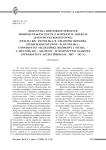Вестник Волгоградского государственного университета. Серия 2: Языкознание @jvolsu-linguistics
Статьи журнала - Вестник Волгоградского государственного университета. Серия 2: Языкознание
Все статьи: 1663
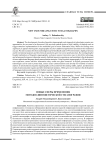
New uses for linguistic steganography
Статья научная
The development of modern linguistic steganography and steganalysis technologies creates new opportunities for use cases to be discovered. Our previous research points to high viability of methods such as trigger-container implementation for the traditional goal of covert information relay. While the findings were significant, it appears that linguistic steganography may have additional applications unrelated to this traditional use case. We aim to analyze how these technologies may be beneficially used in VR-environments, digital governance and for recreational purposes and how these advancements give rise to new speech practices. By investigating the broader implications of linguistic steganography, we hope to uncover innovative ways in which this technology can be harnessed to improve information security, facilitate immersive experiences, and contribute to the development of more sophisticated language-based communication strategies. Using linguistic steganography in VR can improve user experience, ensure sensitive information relay, create new game scenarios. In digital governance these technologies can be used to protect data, ensure secure communications and develop new methods of content analysis. In entertainment, linguistic steganography can be a useful tool for creating riddles, ciphers, and alternative modes of communication in games and other entertainment products. All this gives a new impetus to the development of language practices and prospects for further research in this area.
Бесплатно
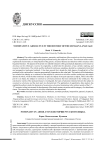
Nominativus absolutus в истории русского языка
Статья научная
В статье исследуются структура, семантика и функции конструкции nominativus absolutus, представляющей собой предикативную единицу, в которой причастное сказуемое имеет собственное подлежащее. Актуальность работы обусловлена противоречивостью толкования в существующей лингвистической литературе генезиса, структурных особенностей и функций этой конструкции. С применением сравнительно-исторического и сравнительно-типологического методов доказано, что, несмотря на высокую степень предикативности причастия в nominativus absolutus, оно остается в грамматической зависимости от глагольной части. Установлены маркеры данной зависимости: тождественность или кореферентность подлежащих nominativus absolutus и глагольной части; одно подлежащее обозначает целое, а другое - его часть; подлежащее одной части обозначает субъект, а другой - объект; субъект nominativus absolutus - обладатель предмета, обозначенного в глагольной части. Представлено конструктивное многообразие анализируемой клаузы и охарактеризованы типы семантических отношений между подлежащими в nominativus absolutus и главном предложении. С привлечением количественных данных показана динамика функционирования nominativus absolutus, нашедшая отражение в памятниках письменности XI-XVII веков. С учетом развития строя простого предложения и категории придаточного предложения определены причины утраты конструкции nominativus absolutus.
Бесплатно
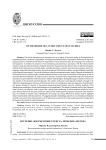
On Methodology in Document Text Studies
Статья научная
The article characterizes the document text as an object of linguistic studies by distinguishing its polycoded specificity, dynamism, changeability, extralinguistic predetermination. It generalizes discussions on top issues grouped around a composition-and-discursive organization of some document types, their language unit consistency and categories. It considers the processes of text composing and perceiving in accordance with the communicative situation, social-and-cultural orientation, disparity between the document text and other text types. It determines linguistic methods for the document-text-oriented studies, including descriptive, semantic, functional-and-semantic, discursive, pragmatic, categorical-and-textual analyses, structural comparison, field structure modeling, semantic differential searching, psycholinguistic experiments. The growth of business-oriented communication areas, usage of Internet technologies for information delivery and blurring the normative borders between various types or subsystems of documents, as well as document function modification in modern social environment are stated to have sharpened the study aims and renewed discussions on genre definition of the document or efficient methodology in distinguishing genre reference of some new text samples. In the document-oriented linguistics the complex of discursive and linguistic methods is thought to be efficient in designating genre reference of the document texts as its multipurpose steps and stages allow for defining the text position through its function in the general document-oriented typology, and also verifying specificity of the document text composition, diverse verbal strategies in text organization. The samples of research results at the Volgograd State University are offered in order to prove that a step-by-step introduction of various methods unlocks the way to genre features distinction and genre parameters setting which enables general pragmatic assessment of the document type, the methods of semantic topics identification and group type setting, followed by stylistic analysis, highlight discursive particularity of the document text. The suggested complex methodology opens the way to presenting multispectral scientific assessment of the document genre via the parameters-assisted analysis that widens general knowledge about the document text profile in modern linguistics.
Бесплатно
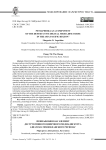
Peniaphobia as a component of the destructive digital media discourse in the Asia-Pacific region
Статья научная
Modern hybrid linguistic-mental and information warfare massively uses the promotion of destruction in the mass media as a tool of negative ‘soft power' media discourse directed against China, Vietnam and Russia owing to their being the key players in the geopolitical arena of Southeast Asia. The discourse of Western geopolitical opponents promotes peniaphobia (fear of poverty), which is one of the basic human fears since it is associated with ensuring the efficient viability of man and human civilization as a whole. The authors attribute peniaphobia to one of the universal social stigmas that affect the social structure and culture of the community, recognizing that media discourse is actively using open public Internet communication to control public consciousness gently. Meanwhile, intense exploitation by the media of alleged financial insolvency, looming economic crises, food shortages and impending hunger, the adverse effects of international labor migration and the deplorable state of the labor markets rapidly generate protest moods in society, changing social perceptions of money, food and food consumption. Information intakes that enhance peniaphobia use scenario modeling the presentation of potentially dangerous themes in the mass media of Russia, Vietnam and China. The article assesses the manipulation of public consciousness in the context of the pandemic, complicated by the psychological and informational confrontation between East and West and Western socio-economic and political sanctions imposed in connection with the Russian-Ukrainian conflict. Modern social culture has updated the features of presenting information using a digital format and subsequent decoding, which, in general, has influenced social dynamics. Based on analyzing the ethno- and sociocultural behavior of ‘digital aborigines' on the Internet, the sociocultural approach to modern manipulation techniques of the public consciousness demonstrates the change in the use of methods of manipulation compared to representatives of the ‘pre-digital generation'.
Бесплатно
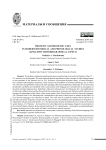
Статья научная
The problem of phonetic and phonemic laws reconstruction in the works of linguists of the 19th - 21st centuries was investigated. The study demonstrated the significance of the concepts of sound changes based on the postulate of the phonetic law by E.D. Polivanov (convergent-divergent theory of sound changes),R.O. Jacobson (phonological mutations), which became the foundation of historical phonology, due to whichV.K. Zhuravlev completed the construction of the paradigm of historical (diachronic) phonology. It was shown that the phonetic variability and variability of the sound system of the language were considered as a consequence of the action of certain linguistic laws. Definitions of the terms “phonetic law” and “phonemic law”, the establishment of their main differences proved the thesis about the connection of synchrony and diachrony which allowed us to interpret the phenomena of the history of the sound systems of the Proto-Slavonic and East Slavonic languages. V.K. Zhuravlev and Yu.Ya. Burmistrovich's contribution to the study of these issues in relation to the history of East Slavonic languages were described in detail. The work used an actualistic method which allowed us to consider a particular linguistic concept from the point of view of contribution and significance for linguistics in comparison with previous achievements. A.S. Orel presented the material on phonemic laws in works on the sound system history; A.V. Piskunov - the material on the role of phonetic law and analogy, linguistic reconstruction in the works of Kharkiv, Moscow, Kazan schools scientists of; V.A. Glushchenko - the material on understanding the essence of phonetic law in the works of Kharkiv and Moscow schools scientists.
Бесплатно
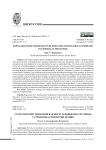
Popularization strategies in eliminating knowledge asymmetry in expert-lay discourse
Статья научная
The article examines replies of healthcare professionals on ask-a-doctor forums, which have barely been treated in terms of popularization strategies employed in expert-lay interactions where a set of specialized concepts needs to be displayed in a way that enables lay users to understand them. The study was thus motivated by the lack of explicit guidance for healthcare professionals who are to interact with lay persons, and challenges faced by lay users in attempting to understand abstract specialized concepts. The study is based on the assumption that popularization strategies improve comprehensibility of medical information, prevent the emergence of communicative problems, and contribute to the dissemination of medical knowledge to a lay audience. A taxonomy of the strategies used by healthcare professionals in disseminating medical knowledge on ask-a-doctor forums is built, linguistic markers that signify these strategies in expert-lay interactions are identified. A corpus-based analysis revealed that definitions, denominations and reformulations were the most common tools employed by doctors to communicate specialized knowledge to lay-forum users. Metaphors and scenarios were infrequent in the corpus. Combined strategies were also used in doctors’ replies, but their share was insignificant. It was concluded that the use of popularization tools in disseminating medical knowledge is an effective discursive mechanism that facilitates understanding among layaddressees and produces specific reactions by resorting to familiar concepts and domains.
Бесплатно
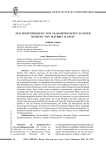
Positioning guests in a Maybrit Illner talk show
Статья научная
In this paper we analyze techniques applied by the producers of a talk show in order to position the talk show guests as relevant participants with respect to the subject of fiscal evasion by celebrities. We analyze how the producers succeed in positioning their guests right from the beginning as prototypical representatives. This positioning is achieved through the coordination of a voice from offstage and the management of the cameras when the guests first appear on screen. Two of five guest introductions are analyzed in detail. The two presented guests demonstrate a clearly antagonistic relationship and their introduction is immediately consecutive. We have reconstructed the introduction of all five guests in detail which resulted in the identification of a network of positions. Unfortunately we cannot present all of our analyses here due to the lack of space. At the positional network’s center lies the thematic and personal “antagonism” which we reconstructed. At the periphery we have four representatives of societally relevant positions who contribute to the topic of the talk show. The four guests respectively represent jurisdiction, politics, and ethics via a lay perspective, psychology and theology. The analysis is theoretically framed by the multimodal notion of “positioning” and “recipient design”, while the applied methodology is multimodal interaction analysis.
Бесплатно
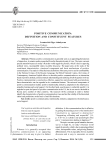
Positive communication: definition and constituent features
Статья научная
Whereas positive communication is generally seen as an appealing phenomenon of interaction, it remains under-researched from the theoretical point of view. The topic warrants special attention because in today's Russian world negativity prevails, which is due to opposing political views, incompatible values in public discourse. The paper aims at the study of the constituent characteristics, structural components and basic mechanisms of positive communication. The analysis of the dictionary definitions of the term positive and its combinability in the National Corpus of the Russian Language, the British National Corpus, the Corpus of Contemporary American English allows to describe positive communication as an interaction based on positive attitude, aimed at mutual understanding and satisfying for all the parties involved. Positive communication is constructive, effective, supportive and coloured with good emotions; these characteristics can be regarded as its constituent features. The universal components of positive communication include: positive intentionality, initiative, adaptation to the interlocutor, empathic listening and social support. On the other hand, assertiveness is culturally specific: it is regarded as part and parcel of positive communication in the US, but is not seen as desirable in Russia and a number of other countries. The research will be continued in order to further identify the characteristics of positive communication, trace and test the validity of the theoretical claims and predictions on the basis of real-life situations.
Бесплатно
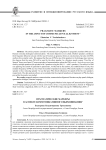
Pragmatic markers in the aspect of communicative alignment
Статья научная
The article presents a model of communicative alignment in pragmatic markers (PM) use in Russian everyday dialogical communication. The main objectives are to check whether speakers coordinate their linguistic behavior not just with the use of lexemes or grammar forms or constructions, but also with PMs and how this actually works. We suppose that the use of PM by one of the speakers in the dialogue may increase the chances that the same PM will be used by the other speaker. In a Russian speech corpus “One Day of Speech” there were found 57 macro-episodes of communication where the PM koroche / koroche govorya was used by multiple speakers (46 episodes with 2 speakers using the PM, 11 - with 3 speakers). The analysis of PM use applying the system of quantitative parameters, worked out by the authors, has enabled them to note, that medium frequency of PM use rises when the number of speakers increases. PM used by speaker 1 is repeated by speaker 2, thus inducing speaker 3 to use the same PM, which influences the speech of the first two speakers respectively. The data analysis allows us to conclude that the original hypothesis of alignment in PMs has been proved for the marker we studied.
Бесплатно
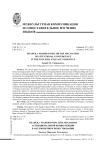
Reader, I married him, или механизм аттенциональной конвергенции в англоязычном повествовании
Статья научная
Цель проведенного исследования заключается в описании аттенциональной конвергенции, определяемой в статье как способ формальной организации повествования, использующий конвергентный потенциал сразу нескольких механизмов фокусирования внимания для интенсификации когнитивной активности читателей. Охарактеризованы «аттенциональные эффекты», связанные с комбинаторным использованием таких типов выдвижения, как сильная позиция текста, эффект обманутого ожидания, сцепление, интекст. Доказана значимость аттенциональной конвергенции в создании когнитивного диссонанса как неотъемлемой составляющей интерпретационной программы современного художественного текста. Действие механизма аттенциональной конвергенции раскрыто на примере произведений современных англоязычных авторов-женщин посредством конструирования гендерной идентичности персонажей. Материалом исследования послужили рассказы Дж. Брискоу, Т. Шевалье, Э. Фрейд, Т. Хедли, С. Хилл, С. Викерс и др., опубликованные в сборнике «Reader, I Married Him», вышедшем в 2017 г. и посвященном 200-летию со дня рождения Шарлотты Бронте. Установлено, что все анализируемые в статье рассказы интертекстуально соотносятся с романом «Джейн Эйр» и предлагают современный взгляд авторов-женщин на проблемы гендерных стереотипов, гендерных ролей и гендерно обусловленного поведения, выражаемый в том числе посредством аттенциональной конвергенции. Результаты проведенного исследования доказывают актуальность дальнейшего изучения механизмов фокусирования / дефокусирования, а также создания множественных фокусов внимания, способствующих повышению экспрессивности повествования, выражению авторской модальности и усилению прагматического воздействия на читателей.
Бесплатно
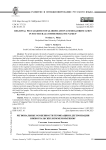
Regional peculiarities of glorification and deglorification in South Ural commemorative names
Статья научная
The article presents the results of cognitive, language-and-cultural and sociolinguistic analysis with the goal to distinguish the markers of regional identity in commemorative names, viewed as heroic ideologemes that help in actualizing ideological and axiological ideas of community. The empirical material, that was collected through upstanding sampling from regional web sites and survey, includes region commemorative names represented by nominations of outstanding people and historical events that took place in Chelyabinsk region. Considering cultural history of the territory, the commemorative names could remain in the regional consciousness for a long time without changing the original content. However, the original forms might either be simplified without losing the heroic sense or in the process of transonymization they might fail to keep it in folk naming, undergo renaming, or disappear from the local language landspace. Deglorification may be presented as complete or partial loss of heroic connotations in commemorative names. Heroic meaning of a toponym or microtoponym is kept on in cases of partial deglorification, though being specified by some positive connotations associated with the attitude of the local people to the commemorative name. Heroic meaning of commemorative nomination is faded out in cases of complete deglorification, thus reflecting ironical or contemptuous attitude of the South Ural people to transformed toponyms or microtoponyms. Commemorative toponyms and microtoponyms demonstrate reference to folk nomination; whereas recurrent usage of the same folk names in the answers to the survey is viewed as a reliable proof that regional place names and minor place names are markers of regional identity in the language consciousness of the South Ural people. The results of the study are supposed to be included in the Dictionary of Chelyabinsk regional lexicon.
Бесплатно
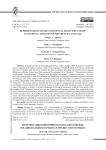
Representation of the conceptual field “education” in national variants of the French language
Статья научная
The paper presents an onomasiological analysis of the conceptual field “Education” exemplified by the vocabulary of the national variants of the French language of France, Belgium, Switzerland, and Canada (Province of Quebec) with the aim to establish the basic nomination principles and identify inter-variational differences within the framework of three sectors of the conceptual field “Education”: “Educational institutions (établissement d’enseignement)”, “Teaching staff (personnel enseignant)”, “Students (étudiants)”. The basic principles of nominating in the field of education are identified by considering the internal conceptual structure of the language units under analysis; inter-variational differences and alterations are stated by categorical-and- semantic comparability of the differentiation semes in the nominations of three sectors of the conceptual field “Education”. The analysis allows to conclude that there exist generic categorical-and-semantic instances within nomination structures that indicate location of training or teaching, specialty, disciplines studied or taught, age, status of the teacher or student, level and methodology of training. In designation of objects in the sectors of the conceptual field “Education” lexical units get into hypernym-and-hyponym relations, thus categorically every sector is formed around some basic concept that is explicated in a hypernym, general nomination for four territorial variants of French, and a set of hyponyms that are more specific and not alike in the exemplification of general semes. The onomasiological analysis of the conceptual field “Education” reveals intervariational concomitant or alternating features, especially in sectors of “Educational institutions (établissement d’enseignement)”, “Students (étudiants)” due to certain social-and-institutional reasons.
Бесплатно
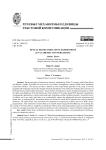
Ritual frame indicating expressions (an academic conversation)
Статья научная
The present paper is based on an interview, conducted by Victor V. Leontyev with Juliane House and Dániel Z. Kádár. It provides an overview of a new theory in pragmatics, namely, Ritual Frame Indicating Expressions (RFIEs). This theory provides a bottom-up and corpus-based approach to the study of various pragmatically important expressions through which the participants of an interaction indicate their awareness of the Ritual Frame underlying the interaction. ‘Ritual Frame’ encompasses a cluster of standard situations in which the rights and obligations of the participants are clearly defined. The corpus-based RFIE approach complements sociopragmatic approaches to various expression types, including so-called ‘politeness markers’, honorifics, forms of address and so on, and it also helps us to systematically capture the relationship between expressions and speech acts. In studying RFIEs, the analyst focuses on the ways in which RFIEs spread across various standard situations. The study of this issue also allows the researcher to contrastively examine the use of RFIEs across linguacultures. Such contrastive research helps us to unearth major linguacultural differences. For example, the research of J. House and D.Z. Kádár has revealed that while in East Asian linguacultures such as Chinese RFIEs tend to be strongly associated with a particular speech act, this relationship is casual in Western linguacultures.
Бесплатно
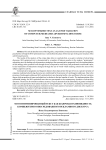
Статья научная
В статье описываются языковые, композиционно-структурные и коммуникативно-прагматические особенности англоязычных SEO-оптимизированных текстов; определяется место данного типа текстов в жанровой структуре рекламного дискурса. Результаты анализа корпусных данных позволяют заключить, что, будучи жанровой разновидностью рекламного дискурса, SEO-оптимизированный текст обладает рядом черт, свойственных современному «прототипическому» рекламному тексту: ведущей ролью стратегии побуждения на коммуникативно-прагматическом уровне; реализацией данной стратегии на синтаксическом уровне за счет использования императивных глагольных форм, перформативных и модальных глаголов; лексическим оформлением стратегии побуждения посредством использования слов, значение которых содержит сему познавательной активности субъекта. Коммуникативно-прагматические и языковые черты, характеризующие данный тип текста как особую жанровую разновидность компьютерно опосредованного рекламного дискурса, обусловлены наличием у него техногенного адресата, что проявляется в низком коэффициенте степени лексической вариативности, высокой доле существительных и прилагательных по отношению к совокупному количеству слов. Реализация оценочной стратегии в SEO-оптимизированных текстах не соответствует требованиям современного рекламного дискурса: в данных текстах не обнаружено усиления достоверности, им свойственна избыточность общеоценочных прилагательных, а также прилагательных в превосходной степени, реализующих тактику «самовосхваления». Оценочная избыточность данного типа текстов обусловливается их основной прагматической направленностью на мгновенный захват внимания потребителя в ущерб реализации ряда тактик самопрезентации, свойственных современному рекламному тексту.
Бесплатно
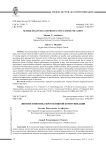
Semiolinguistics of protective communication
Статья научная
The current paper investigates the notion of protective communication represented by systems of signs, texts, rituals which the authors regard as means of neutralizing cognitive constructs, generated by phobias of varying degrees of irrationality. Classification of phobias on psycho- and sociolinguistic grounds allows developing their typology from the point of view of the cause of their origin: supernatural entities (superstition), individual fearful images (prejudice), social suspicion (bias). As the study showed, sacred horror caused by destructive forces of nature, climatic phenomena not subjected to man, and astronomical events gave rise to supernatural, esoteric phobias reflected in superstitions. Biological phobias appeared in response to real dangers, associated with daily human activities, personal imaginarytroubles and fears, which generated a system of prejudice invented by man himself. Social interaction of people, with its negative stereotyping and categorization of social space, entailed a wide range of phobias (racial, religious, age, gender, etc,) which turned into social biases. On his way of development, a man tried hard to find protection against phobias of different nature, creating an extensive system of protective means incorporated in religious, magical and intolerant types of discourse, consequently neutralizing superstitions, prejudices and biases in specific genres, verbal and non-verbal signs, texts and rituals of the above mentioned types of discourse.
Бесплатно
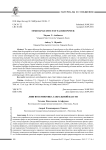
Semiolinguistics of sacred power
Статья научная
The paper addresses the phenomenon of sacred power as the oldest regulator of the behavior of ethnos from the perspective of social semiotics: it includes the definition of this type of power, its basic spheres of actualization (religious and magic) and identification of its lingual-semiotic, ethno-cultural and discourse parameters in the various semiolinguistic ways: sacred objects and buildings, actions and rituals, verbal texts, language formulas being included. The sacred is defined as something inexpressible by its nature, it is stated that it can be approximated to personal understanding only through the symbol. Sacred power generates semiolinguistic space in the form of verbal and non-verbal signs of various form and content that perform their protective impact on the objects of sacred power. Special attention is paid to genres and rituals through which sacred power is exercised. The authors highlight the phenomenon of ceremony that gives a sacred meaning to human actions, and show what special rituals are linked to communicating with the sacred power.The semiotic aspect of religious and magical protection is differentiated by the quality of the sign: religious semiolinguistics involves sacred myths and symbols, and magic semiolinguistics is based on chasing-out and purifying magic with its signs and texts.
Бесплатно
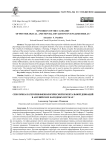
Sensorics of the category of physiological and mental deviations in English drolls
Статья научная
The paper deals with sensory means of the expression within the semantic fields of the category of physiological and mental deviations in English old drolls. The source of material is folklore texts by T. Blount, W.C. Hazlitt, E.S. Hartland, G. Stephens, T. Sternerg, T. Wright, Ch. S. Burne, J. Jacobs. The semantic and contextual analyses of the sensory lexemes, collocations, phraseological units representing the semantic fields that form the category under study were considered as the main research methods. The semantic analysis showed that linguosensory lexical units in the folklore texts actualize different areas of semantic fields that reflect social views about physiological and mental deviations. It has been defined that the structure of such fields implies a core, consisting of lexical units of a neutral-bookish style, the near periphery, including the lexis of informal style with further differentiation, and the interpretative field. The distant periphery in the structure of these fields was not formed. The semantic features of the category of physiological and mental deviations defined in the boundaries of the contextual analysis is comprise into the semantic field of the dicteme as a result of the contextual analysis of lexical units. The material and findings of the study can be used to pursue the contrastive and comparative analyses of perceptional linguistic means in the boundaries of cognitive linguistics, linguosensorics.
Бесплатно
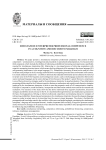
Simultaneous Interpreter Professional Competence in a Cognitive and Discursive Paradigm
Статья научная
The paper presents a simultaneous interpreter professional competence that consists of three components – communicative, extralinguistic and procedural or specialized (sub)competences. It is focused on the third component, which includes the abilities of inferencing, probabilistic forecasting and compression, specifically required for simultaneous interpreting (SI). Inferencing is a two-staged process of retrieving assumptions with regards to composing invariant senses, which means deriving inferences of the message in the source language (SL) and generating implicatures in the target language (TL). Probabilistic forecasting is based on the analysis of the invariant sense prompts in the SL message and boils down to anticipating invariant sense evolvement in the context. It is closely related to compression – an ability to eliminate the redundant information and to condense the retrieved invariant sense in the SI for linguistic and extralinguistic reasons, such as interlanguage asymmetries between the source and target languages and an acute shortage of time because of the speaker's speed. Moreover, compression is one of the key discursive strategies used by the simultaneous interpreter in speech production. These information processing abilities stand for the SI inherent cognitive features or mechanisms and cognitive-and-discursive strategies employed by the simultaneous interpreter in order to meet the pragmatic needs of a SI communicative situation. Descriptive, comparative, model simulation, introspection and observation methods were used for the research task realization. The outcomes of the study show that the above mentioned three cognitive mechanisms, discursive strategies and abilities closely interact in the SI; it is manifested through inferences and implicatures generated on the basis of presuppositions. Relying on his/her professional competence and employing discursive strategies of inferencing, probabilistic forecasting and compression, the simultaneous interpreter chooses the adequate language means to render invariant sense in its transition from the source to target languages. The choice is facilitated by presuppositional knowledge rooted in the worldview of the source and target languages, constituting the simultaneous interpreter's language and conceptual thesauri. Another important factor assisting SI cognitive processes and the choice of discursive strategies is the analysis of text functions that makes it possible to elicit presuppositions helpful for inferencing and probabilistic forecasting.
Бесплатно
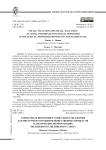
Статья научная
The article discusses various approaches to defining the terminological base, the ambiguity of definitions, the lack of clear boundaries and signs of the concepts of social exclusion and social inclusion. The notions under study are characterized by way of their reference to communication process circumstances and participants, who are contrasted in their social status, cultural experience, ideological ideas and worldview to other social groups. The article analyzes slang neoformations with the concern for stylistically reduced register of communication as objectifying categories of social exclusion and social inclusion within the framework of youth discourse, which determine the developing vector of both society structure on the whole and social subsystems of the language. The novelty and relevance of the study lie in the use of linguocognitive analysis of authentic material, on the basis of which the mechanisms of exclusion and inclusion of slang lexical units are differentiated. The regularity in actualization of social exclusion or inclusion is understood in connection with the mechanisms and possibilities of using communicative practices in order to include social groups in social processes. These phenomena are reflected at the lexical level of the language and might contribute to various transformations of social consciousness, increasing language efficiency and its ability to respond to current challenges. It is concluded that modern youth slang is a specific language model that acts as an instrument of social exclusion or inclusion; in communicative practices, it is embodied through pejorative slang nominations thus strategically and tactically forming a negative image and antisocial behavior. The results of the research contribute to further study of the communicative nature of sociolinguistic phenomena, to comparative studies of the discursive construction of socially significant fragments of social reality, and the communicative manifestation of multidirectional social processes that determine the social structure and stratification of society.
Бесплатно

